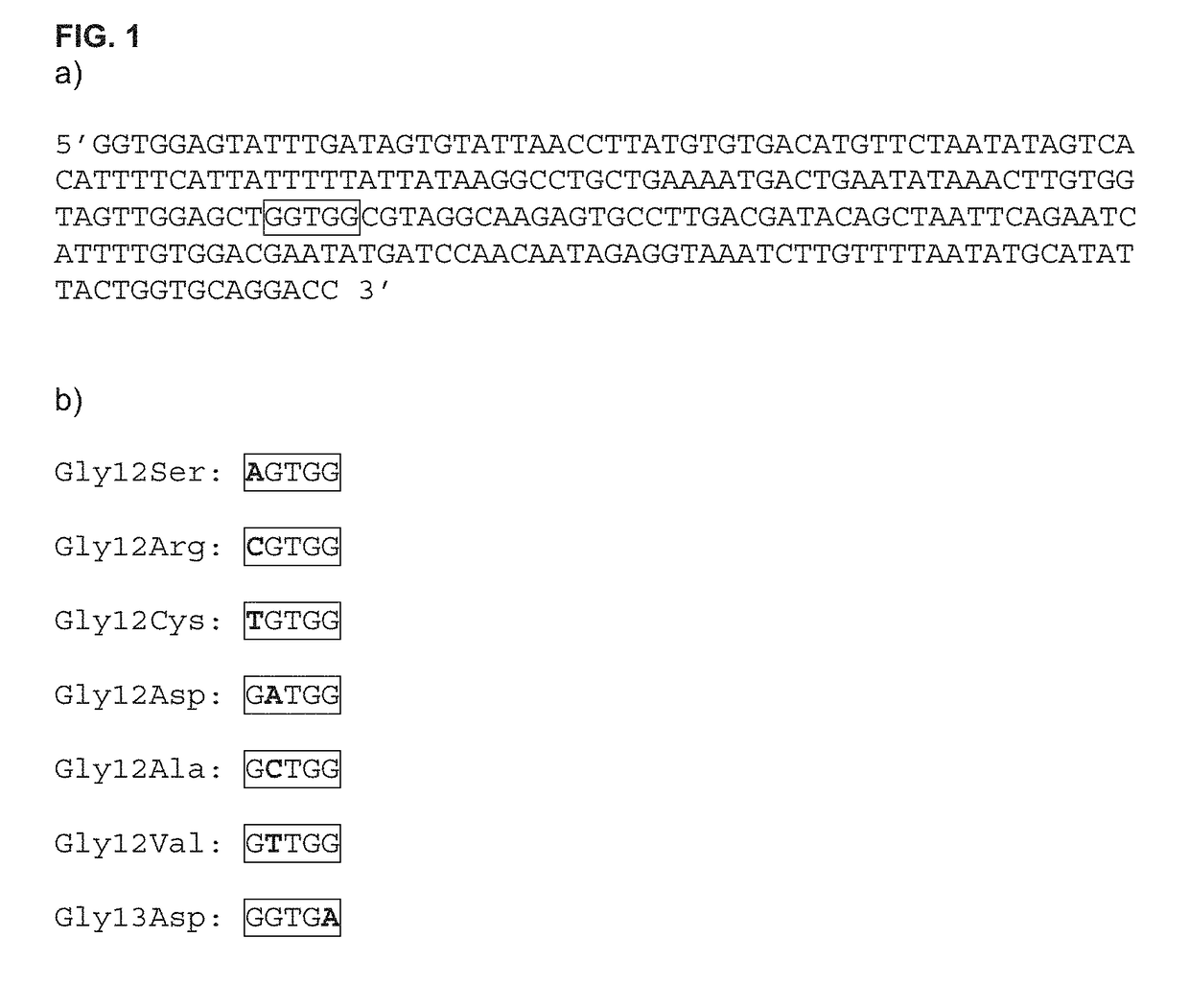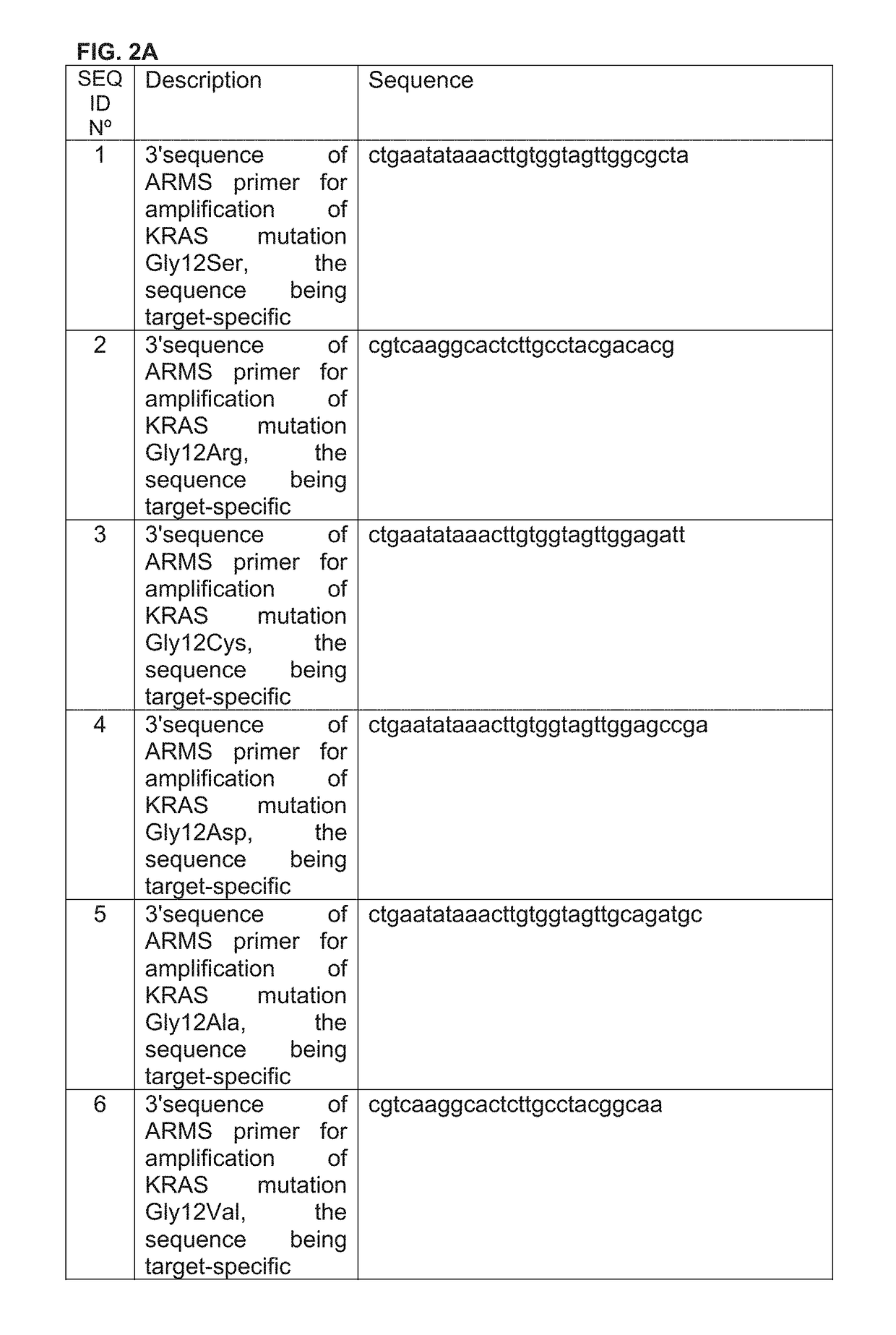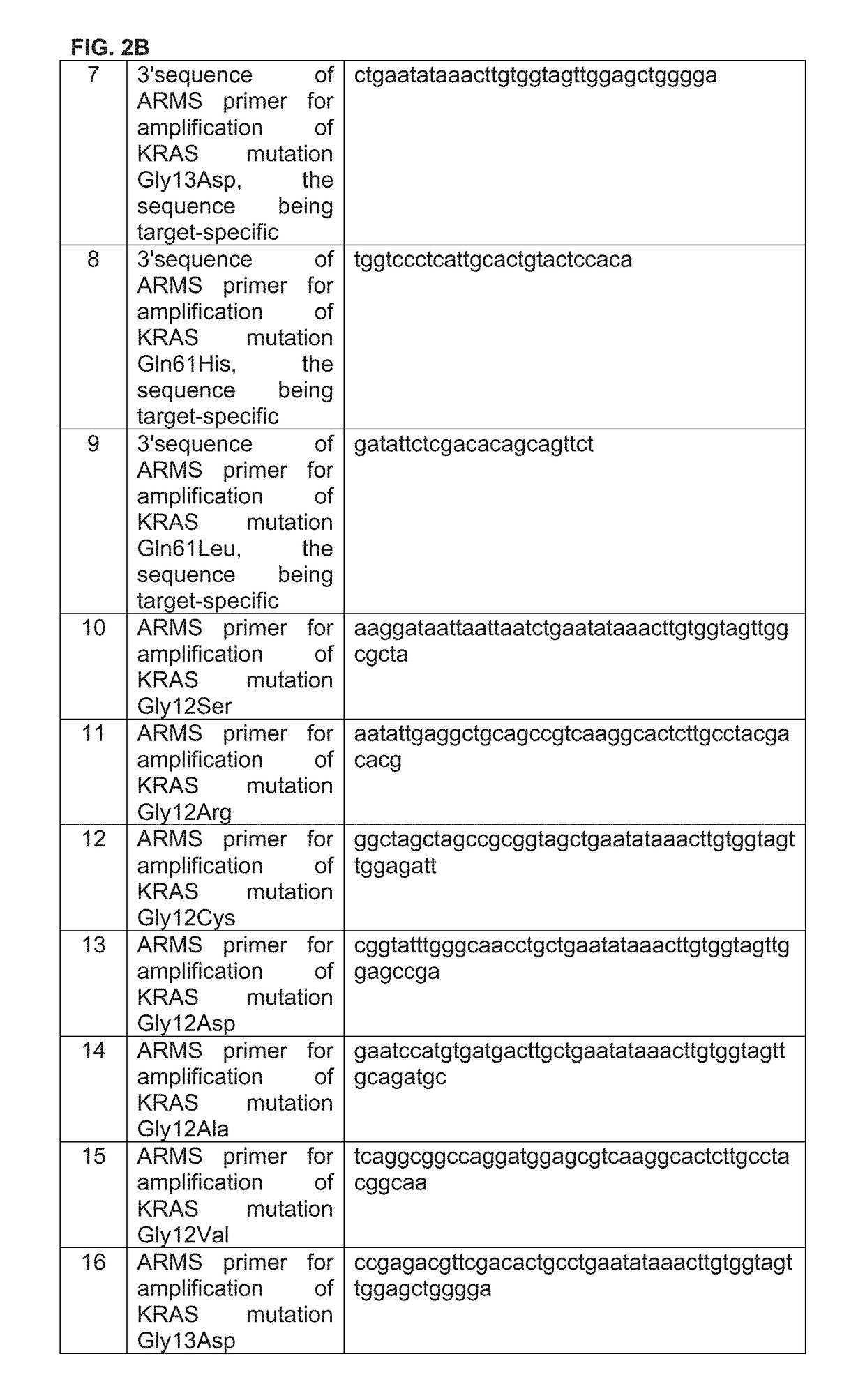Method for detection of KRAS mutations
a technology of kras and mutations, applied in the field of kras mutation detection, can solve the problems of inability to detect low-adjusted mutations accurately, inability to detect codon 61 mutations, and inability to simultaneously detect arms products corresponding to different kras mutations,
- Summary
- Abstract
- Description
- Claims
- Application Information
AI Technical Summary
Benefits of technology
Problems solved by technology
Method used
Image
Examples
example 1
[0187]The following mixture of reagents was prepared for Multiplex ARMS amplification of the KRAS mutations Gly12Ser, Gly12Asp, Gly13Asp and Gln61 His in samples / cell lines / clones (Multiplex 1):
[0188]
StockFinalConcentrationConcentrationReagents Multiplex 1(μM)(μM)2X QIAGEN Multiplex PCR 2x1x Master MixARMS primer SEQ ID No 10500.20ARMS primer SEQ ID No 13500.20ARMS primer SEQ ID No 16500.20Amplification primer SEQ ID No 19501.00(Biotin labeled)ARMS primer SEQ ID No 17500.20Amplification primer SEQ ID No 22500.80(Biotin labeled)H2OUp to 45 ul
[0189]In the same way, mixtures of reagents corresponding to Multiplex 4 and Multiplex 5 were prepared as well.
[0190]The total volume per tube is of 45 μl.
[0191]Next, 5 μl of a total eluate of 30 μl obtained from paraffin-embedded tissue sections (sample), or from the indicated clones, were added up to a final reaction volume of 50 μl.
[0192]
TubeSample / ClonMutationMultiplex1SampleG12S12SampleG12R53SampleG12D14Clon 10e5G12C45SampleG12V56Clon 10e5G...
example 2
[0201]Clones of the different KRAS mutations were prepared, and detection of different dilutions of these clones was tested, both with the kit of the present invention (CMA), and with a Gold Standard Kit (TheraScreen® K-RAS Mutation Kit of Qiagen).
[0202]The dilutions tested included 100,000; 10,000; 1,000; 100; and 10 copies in 5 μl of clones of the different KRAS mutations. Some representative results of this comparison between the CMA and TheraScreen kits are to be found in FIG. 5.
[0203]Basically, the dilution corresponding to 1,000 copies of any of the KRAS mutations was detected without problem with the CMA kit. Displayed in FIG. 5a) is the result obtained with 1,000 copies in 5 μl of the clon of G12R KRAS mutation.
[0204]Results of detection of 10, 100 and 1,000 copies of a G12R KRAS clone in 5 μl with the Gold Standard kit, TheraScreen of Qiagen, are shown in FIG. 5b). The TheraScreen Kit of Qiagen is based on Scorpions real-time assays. These assays use the number of PCR cycle...
example 3
[0212]Diagnostic parameters including diagnostic Sensitivity, diagnostic Specificity, Positive Predictive Value and Negative Predictive Value, of the CMA kit of the present invention, were obtained for the different KRAS mutations. The total number of samples that were tested is of 376 real samples.
[0213]
KRAS MutationN = 376SensitivitySpecificityPPVNPVG12A2596.0099.4892.3199.74G12C2386.96100.00100.0099.23G12D6898.5399.7198.5399.71G12V5292.31100.00100.0098.89G12R7100.0099.7587.50100.00G12S2596.00100.00100.0099.74G13D3992.31100.00100.0099.19Q61H3100.00100.00100.00100.00Q61L2100.00100.00100.00100.00Native132ND98.51ND97.06ND: Non-determined. There is no point in determining Sensitivity and PPV values in case of native KRAS.
PUM
| Property | Measurement | Unit |
|---|---|---|
| temperature | aaaaa | aaaaa |
| temperature | aaaaa | aaaaa |
| temperature | aaaaa | aaaaa |
Abstract
Description
Claims
Application Information
 Login to View More
Login to View More - R&D
- Intellectual Property
- Life Sciences
- Materials
- Tech Scout
- Unparalleled Data Quality
- Higher Quality Content
- 60% Fewer Hallucinations
Browse by: Latest US Patents, China's latest patents, Technical Efficacy Thesaurus, Application Domain, Technology Topic, Popular Technical Reports.
© 2025 PatSnap. All rights reserved.Legal|Privacy policy|Modern Slavery Act Transparency Statement|Sitemap|About US| Contact US: help@patsnap.com



